CEC-ITD-TPL JV Casts 1st Tunnel Ring Segment for Mumbai’s Line-3
Earlier this week, the Continental Engineering Co. – ITD Cementation India Ltd. – Tata Project Ltd. JV completed casting the first concrete segment for building the twin tunnels of their 6.081 km UGC-04 section of Mumbai Metro’s 33.5 km Colaba – SEEPZ line.
Roughly 4000 segments will be cast for package UGC-04 (Siddhivinayak – Shitladevi) using molds at CEC-ITD-TPL JV’s casting yard in Wadala, stacked up like this, transported on-site and be fed into the three Herrenknecht TBMs which’ll be commissioned in the last quarter of this year to excavate & build this section’s tunnels.

Line-3 map – view Mumbai Metro info & map
Casting work began on March 7 in an event attended by the MMRCL’s MD, Ashwini Bhide, and other officials from the contractor’s team:
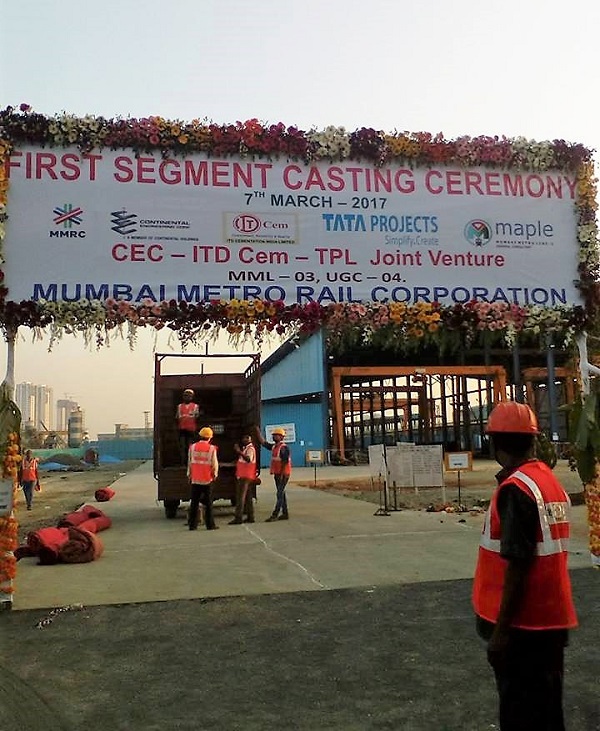
Photo Copyright: Surendra Giri
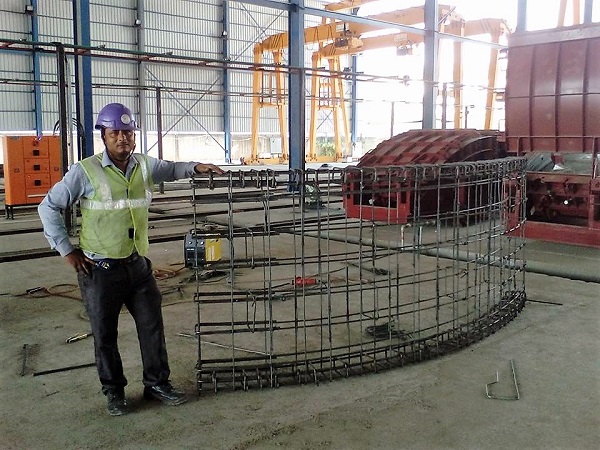
Rebar framework of the segment – Photo Copyright: Surendra Giri
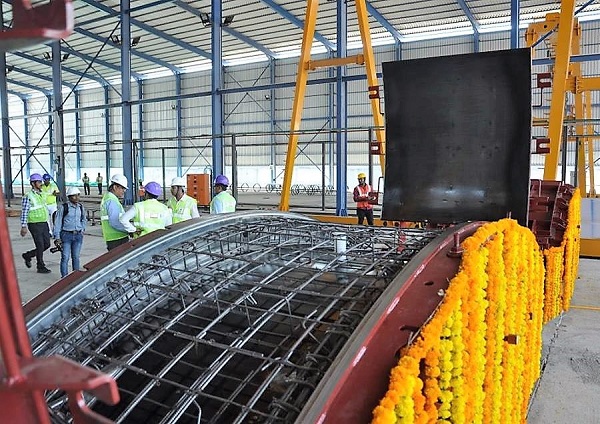
Molds – Photo Copyright: MMRCL
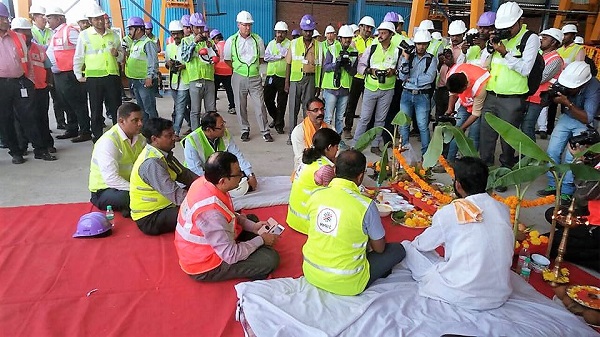
Photo Copyright: MMRCL
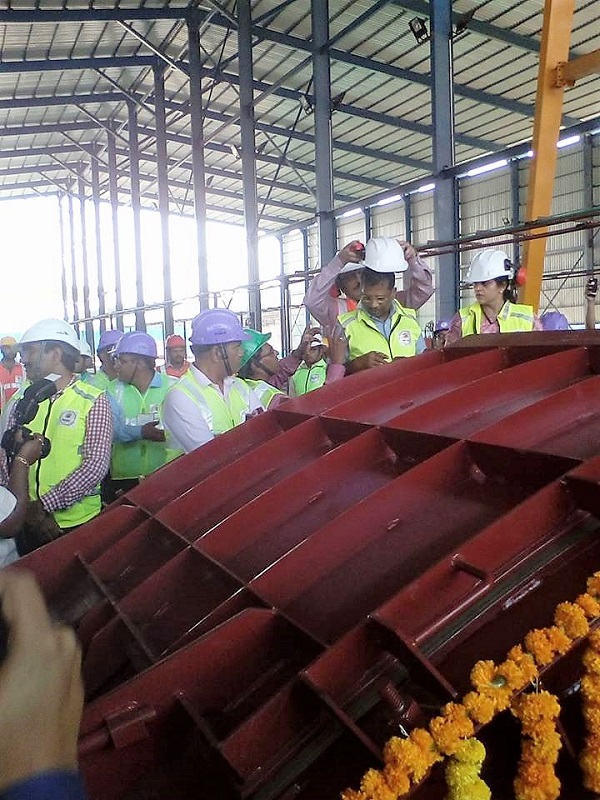
Photo Copyright: Surendra Giri
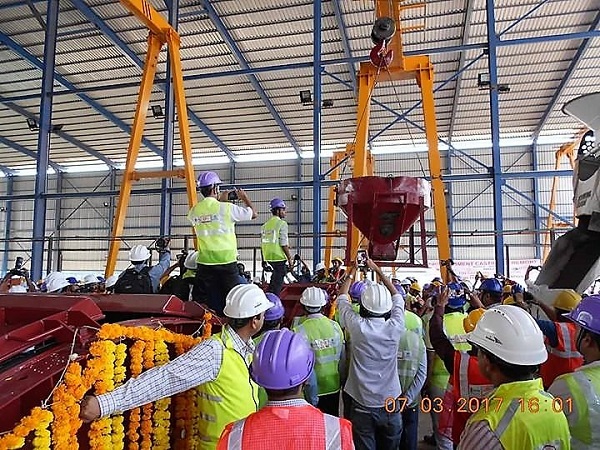
Ready to pour concrete – Photo Copyright: MMRCL
Final look after being cast:
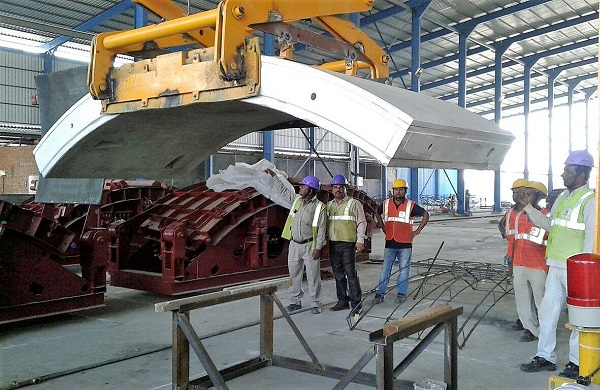
Photo Copyright: Joyanta Dey
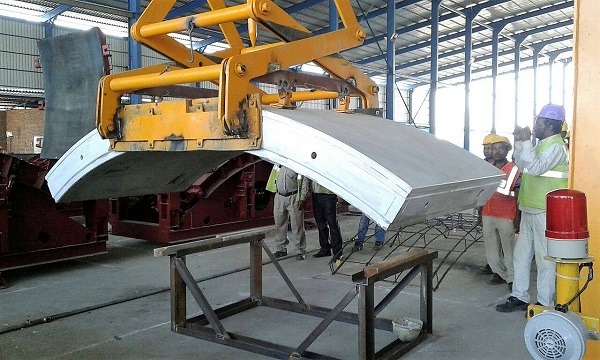
Photo Copyright: Joyanta Dey
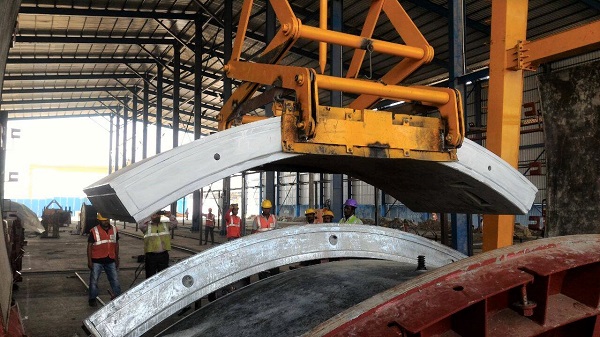
Photo Copyright: MMRCL
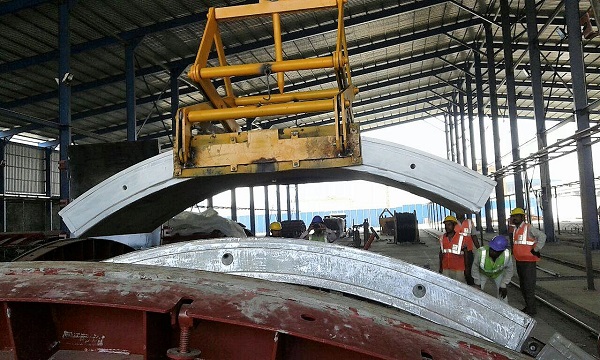
Photo Copyright: Joyanta Dey
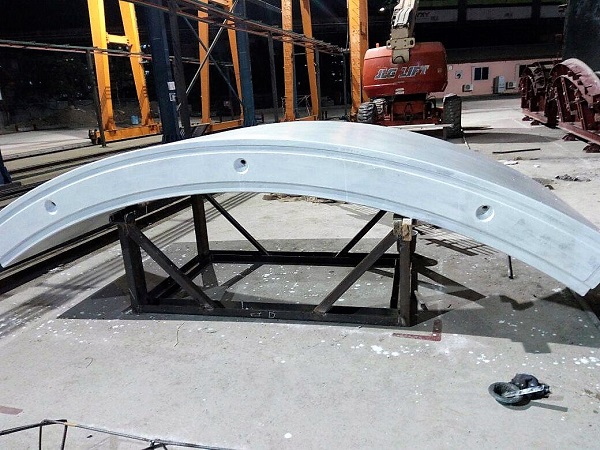
Photo Copyright: MMRCL
A tunnel ring is typically 1.4 m wide, and consists of 5 segments + 1 ‘key’ segment. For the entire 33.5 km line, approximately 40,000 segments will be cast for all 7 civil packages.
I’ve shared this before but it’s a perfect time to rewatch this excellent video demonstrating how the segments will be used to build rings for Mumbai Metro’s tunnels when the 17 TBMs are commissioned one after the other from the under construction TBM shafts later this year. Skip to 5 mins and 15 seconds if it doesn’t automatically do so.
For more updates, check out the Mumbai section of the Metro Rail Guy!
– TMRG




Sir, are all yards located in Wadala?
Hi, Wadala has yards for UGC-01, UGC-02, UGC-03, UGC-04 & UGC-06.
UGC-05’s yard is in BKC while UGC-07’s yard is along the JVLR.
Mr TMRG,
Interesting post and video explains the working of TBEM .
One question ,you have mentioned that the Tunnel Ring is about 1.4 mts, and therefore the quantity of 4000 tunnel rings for approx. 6 km ring appears in line.
However in the post you have mentioned that for entire 33.5 kms approx. 40,000 rings will be placed , this, prima facie does not reconcile , with the 1.4 mts. ring.
Is any thing that I am missing ?
S. V. Phene
Great question! Typically the tunnels built by TBMs are somewhere around 1/2 to 3/5 of the entire line’s length. Mumbai’s underground section consists of several different parts: 7 shafts (25m long), 26 stations (250-300m long) and tunnels built by (a) cut & cover (b) TBMs and (c) NATM tech.
I don’t have the exact length of all stations and tunnels, but as per the MMRCL, the TBMs will use approximately 40,000 of these segments.
It is due to two parallel tunnels Upline and Dnline. Hence the quantity doubles less no rings will be there in Station areas.
Regards
Virender Thakur
It is due to twin tunnels less the length of station boxes in entire section.
Mr TMRG,
Thanks to you and Virendra for clarifying the issues.
Based on the explanations ,I have done a broad reconciliation of no of Tunnel Rings as follows.
Total Length of Metro 3 33.5 Kms = 33,500 Mts
Less 27 Stations each of 200 Mts 5.4 Kms = 5,400 Mts
Tunnel Length 28.0 Kms = 28,000 Mts
Tunnel Ring length 1.4 Mts
Therefore tunnel Rings 20,000 for a line.
Therefore tunnel Rings for both Up line and Dnline 40,000.
Kindly confirm this is in order.
The calculation won’t be as simple as this, but you’ve got the right idea!
Ok
Today, there was news about Metro 10 (Dahisar- Bhayander) being sent for Feasibility Study and may be approved by the year-end. What about Metro 8 and Metro 9? On which routes they are supposed to be planned?
Line-8: Wadala – GPO(CST) – a southward extension of Line-4
Line-9: Andheri (E) – Bandra (E) – a southward extension of Line-7
Honestly, I don’t see why the MMRDA had to use a new set of numbers for these extensions. Perhaps for administrative reasons? Hopefully it remains that way because new users could find it confusing and might believe they need to get off and switch trains.
Don’t you think tying up finances cud be a problem with so many lines being approved?
Mr TMRG ,
Considering the construction time for
1 ( underground ) ITO_ Kashmere gate Heritage line of DMRC over 5 years, ( the work started in Jan 2012 and the section may open to commuters in April 17 )
2 Similar time lines for Washermen pet (UG) section of CMRL.
I feel that in ” heritage and congested ” areas like Colaba- Girgam section of MMRC line 3 will take similar time.
Further the weakest contractors for line 3 J. Kumar and Soma are most likely to delay the project overall schedule. What is your guess ?
Both the lines you mentioned (DMRC & CMRL) had geological problems which held up progress considerably. Tunnelling with TBMs can, as has been seen many times, is very efficient but the design of the TBM, particularly the cutter hear, can create difficulties different strata is encountered to what was envisaged… In the cases you mentioned hard rock in the invert was encountered. There was also a big delay in the construction of Chennai Central station, also due to hard rock).
There is no reason to believe that the choice of contractors will make a difference under these circumstances, in both the cases on CMRL and DMRC the contractors were more than competent to complete the tunnels on time.
Thanks for the information.
But does anybody have information about exact time taken by DMRC and CMRL for these stretches ?
In Mumbai Metro 3 line , we can also expect geological problems specially because the line is over 33 kms in length.
AS regards contractor , in CMRL Gammon India had to be replaced with AFCONs and I am sure that must have delayed the progress.
In Mumbai Metro 3 , if any Contractor fails/ delays , the whole project will be delayed.
Sir,
I am looking for civil tunnel engineer job position.
Hi sir,
Vibhore agarwal from equirent solution
Can you kindly confirm exactly which all packages have NATM method of constructing the tunnel or stations?
Will hydraulic drill jumbo be used for drilling the NATM section?
Your detailed reply shall be highly helpful for me!
The video mentions the TBM can complete 350 Metres per week.
Hence my calculation 32 KM * 1000 = 32000 Metres / 350 = 91 Weeks….that how long it would take to dig the tunnel along with the rings.